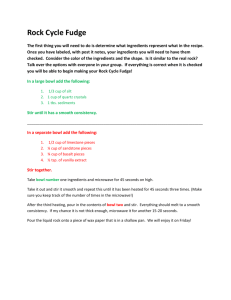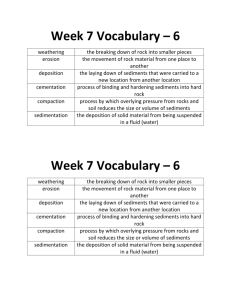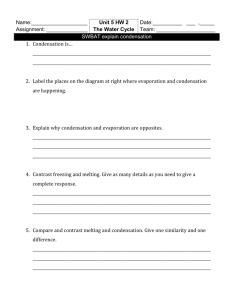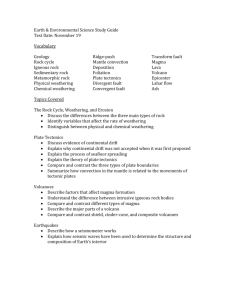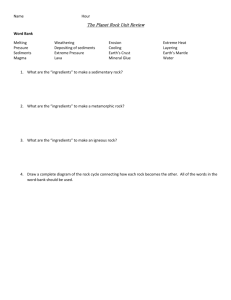Igneous rock
advertisement
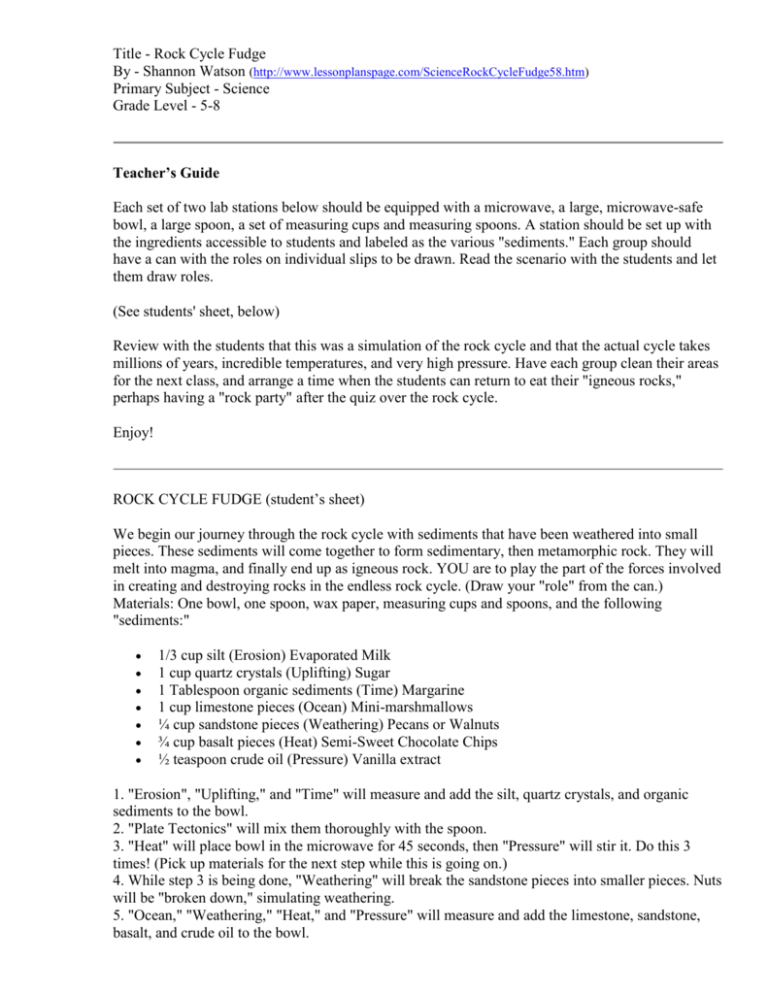
Title - Rock Cycle Fudge By - Shannon Watson (http://www.lessonplanspage.com/ScienceRockCycleFudge58.htm) Primary Subject - Science Grade Level - 5-8 Teacher’s Guide Each set of two lab stations below should be equipped with a microwave, a large, microwave-safe bowl, a large spoon, a set of measuring cups and measuring spoons. A station should be set up with the ingredients accessible to students and labeled as the various "sediments." Each group should have a can with the roles on individual slips to be drawn. Read the scenario with the students and let them draw roles. (See students' sheet, below) Review with the students that this was a simulation of the rock cycle and that the actual cycle takes millions of years, incredible temperatures, and very high pressure. Have each group clean their areas for the next class, and arrange a time when the students can return to eat their "igneous rocks," perhaps having a "rock party" after the quiz over the rock cycle. Enjoy! ROCK CYCLE FUDGE (student’s sheet) We begin our journey through the rock cycle with sediments that have been weathered into small pieces. These sediments will come together to form sedimentary, then metamorphic rock. They will melt into magma, and finally end up as igneous rock. YOU are to play the part of the forces involved in creating and destroying rocks in the endless rock cycle. (Draw your "role" from the can.) Materials: One bowl, one spoon, wax paper, measuring cups and spoons, and the following "sediments:" 1/3 cup silt (Erosion) Evaporated Milk 1 cup quartz crystals (Uplifting) Sugar 1 Tablespoon organic sediments (Time) Margarine 1 cup limestone pieces (Ocean) Mini-marshmallows ¼ cup sandstone pieces (Weathering) Pecans or Walnuts ¾ cup basalt pieces (Heat) Semi-Sweet Chocolate Chips ½ teaspoon crude oil (Pressure) Vanilla extract 1. "Erosion", "Uplifting," and "Time" will measure and add the silt, quartz crystals, and organic sediments to the bowl. 2. "Plate Tectonics" will mix them thoroughly with the spoon. 3. "Heat" will place bowl in the microwave for 45 seconds, then "Pressure" will stir it. Do this 3 times! (Pick up materials for the next step while this is going on.) 4. While step 3 is being done, "Weathering" will break the sandstone pieces into smaller pieces. Nuts will be "broken down," simulating weathering. 5. "Ocean," "Weathering," "Heat," and "Pressure" will measure and add the limestone, sandstone, basalt, and crude oil to the bowl. 6. "Time" and "Ocean" will take turns stirring the sediments as they undergo metamorphosis, finally melting the limestone and basalt back into magma. Discuss the natural processes that are being simulated. 7. "Erosion" will hold the bowl as "Plate Tectonics" uses the spoon to scrape the magma back out onto the Earth’s surface (wax paper). 8. "Crust" will add another sheet of the Earth’s surface (wax paper) over the top of the cooling igneous rocks after labeling it with student names and class period. 9. "Crust" and "Plate Tectonics" will carry the sheet of igneous rocks to a cooling area (refrigerator in the science storeroom). E-Mail Shannon Watson!
